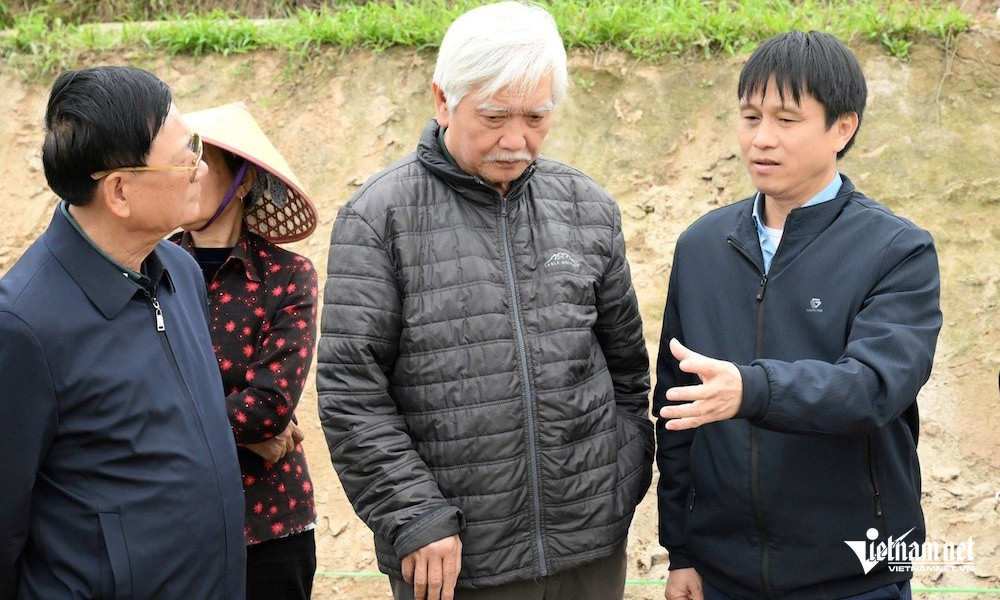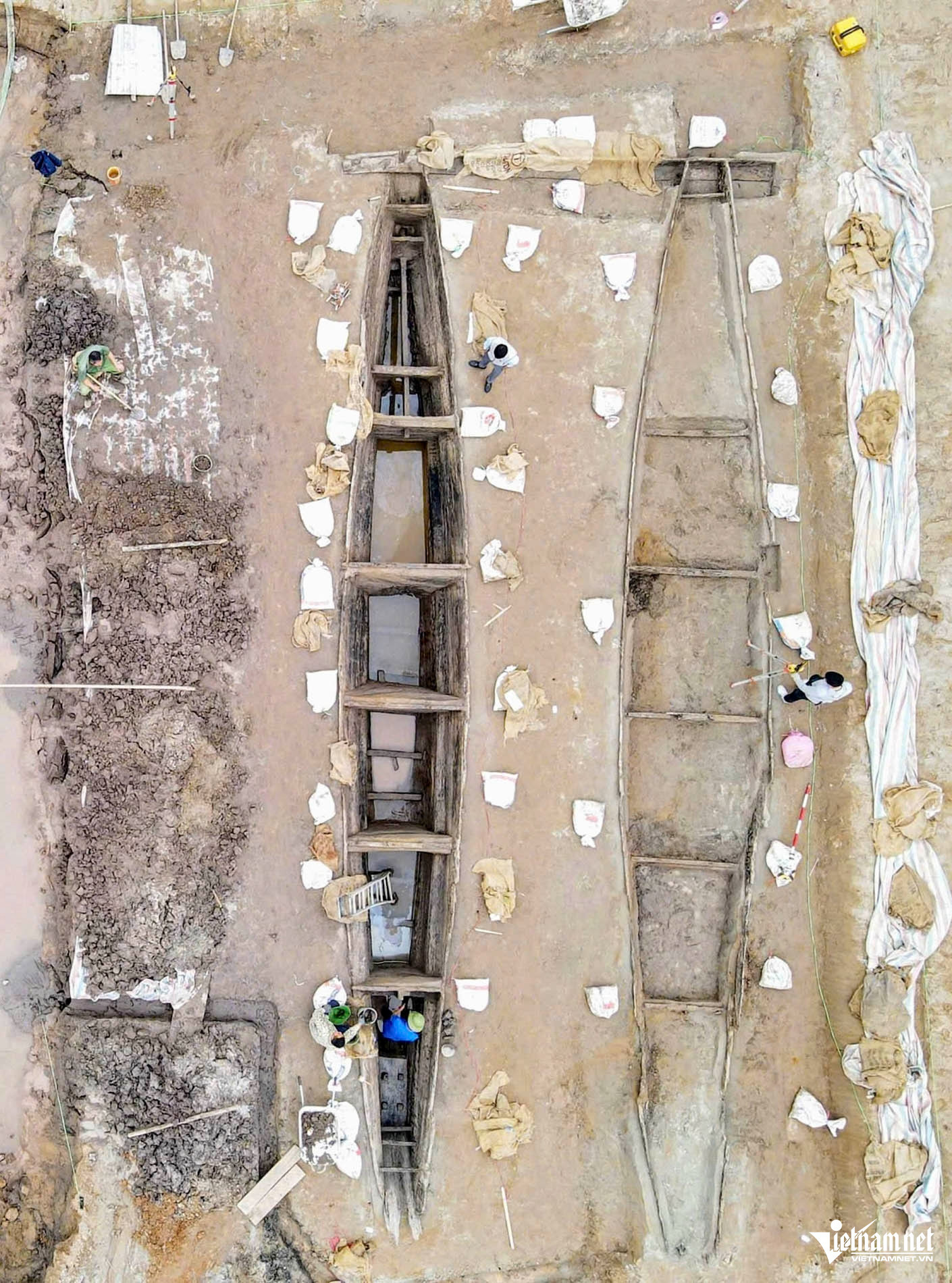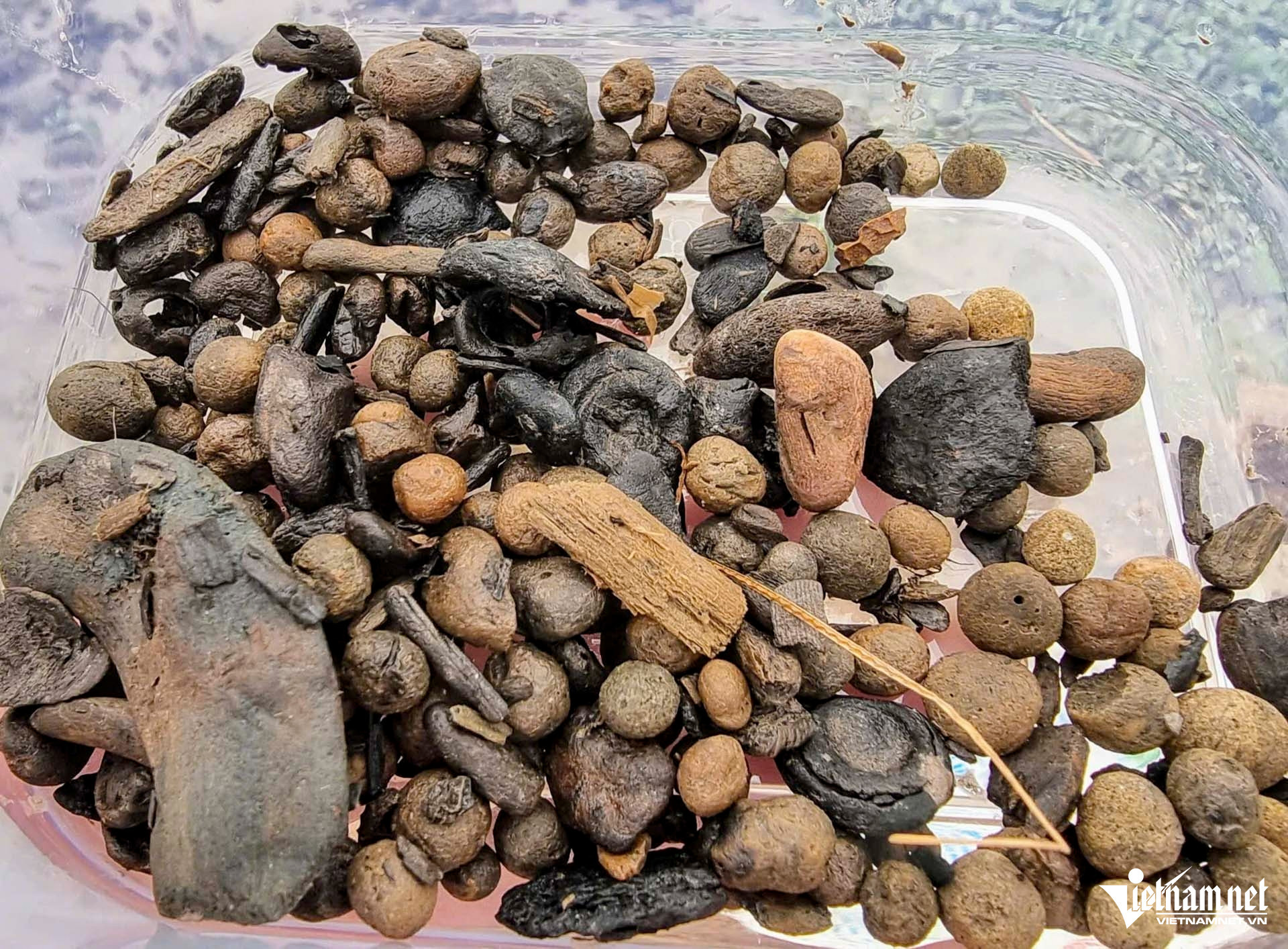
Dr. Pham Van Trieu, Deputy Head of the Historical Archaeology Department at the Institute of Archaeology (Vietnam Academy of Social Sciences), assessed that two ancient boats discovered in Thuan Thanh, Bac Ninh, may date back to the Giao Chi period.
The Department of Culture, Sports, and Tourism of Bac Ninh province is coordinating with the Institute of Archaeology to conduct an urgent excavation of the two ancient boats found by locals in Cong Ha Quarter, Ha Man Ward, Thuan Thanh Town.
Unique ancient boats unearthed
At the excavation site, the hulls of both ancient boats have nearly been fully uncovered. The boats are divided into six compartments. During the excavation, archaeologists carefully removed each layer of sand and soil to avoid damaging the wooden structure and the hull.
The soil from each boat compartment is separately collected and taken to a designated area, where it is washed and filtered to reveal artifacts. Archaeologists then categorize the recovered items, including seeds, fruits, or valuable relics, for further study and analysis.
According to Duong Trung Quoc, boats were commonly used in riverine areas, but finding them buried in ancient riverbeds makes them exceptionally valuable, warranting conservation efforts and the involvement of experts.
Remarkable historical significance


Dr. Pham Van Trieu invited several scientists to the excavation site, and all agreed that the boats are exceptionally unique. Initially, experts thought they might be small merchant vessels made of a single wooden log (dugout canoes), but the structure revealed otherwise. Each boat measures approximately 16 meters in length and between 1.95 to 2 meters in width.
The two boats are structurally interconnected and highly durable. However, their exact historical and cultural significance has yet to be determined, pending the results of Carbon-14 dating and related analyses.
According to historical records, Western and Southern countries wishing to trade and interact with China had to pass through Giao Chi. Since before the Common Era, and especially from the 2nd to 3rd centuries CE, increasing numbers of foreign merchants arrived at Giao Chau, with their boats frequently docking at Luy Lau. Archaeological evidence and historical documents at Luy Lau confirm that it was a major international commercial hub during the Northern domination period.
“These boats have yet to be definitively dated, but they could be solid proof of the trading activities along the Dau River,” Dr. Trieu emphasized.



Dr. Vu The Long, a multidisciplinary researcher known for his contributions to archaeological conservation, remarked that the discovery offers a valuable opportunity to study the history of trade and local living conditions. He stressed the need for immediate preservation, paying special attention to humidity and chemical factors affecting the materials. Additionally, he suggested organizing an on-site workshop to promptly evaluate the findings while ensuring that conservation measures are taken from the outset.
In December 2024, local residents discovered the ancient boats while digging ponds for aquaculture. The site is located on the Dau River, a tributary of the Thien Duc River (Duong River), near the western wall of Luy Lau Citadel.
Vuong Quoc Tuan, Chairman of Bac Ninh Provincial People’s Committee, has assigned the Department of Culture, Sports, and Tourism to collaborate with the Institute of Archaeology (Vietnam Academy of Social Sciences) to urgently excavate the ancient boats. The excavation is being conducted from March 3 to April 3, 2025, over an area of 300 square meters.
Bao Khanh